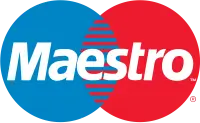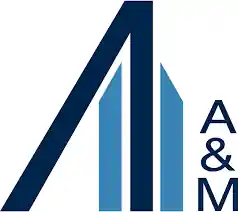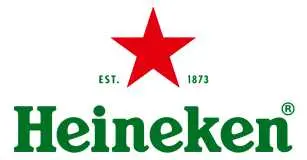
Thailand Lubricant Market Growth, Trends, Size, Revenue, Demand, Share and Future Outlook
Thailand Lubricant Market Size- By Product Type, By End User- Regional Outlook, Competitive Strategies and Segment Forecast to 2033
| Published: Sep-2023 | Report ID: CHEM2389 | Pages: 1 - 105 | Formats*: |
| Category : Chemical & Materials | |||
- May 2022: TotalEnergies and NEXUS Automotive extend their five-year strategic partnership. TotalEnergies Lubricants will increase its market share in the rapidly growing N! community as a result of this cooperation, which will see sales jump from EUR 7.2 billion in 2015 to roughly EUR 35 billion by the end of 2021.
- ExxonMobil Corporation was divided into three business segments on April 1 of that year: ExxonMobil Upstream Company, ExxonMobil Product Solutions, and ExxonMobil Low Carbon Solutions.


| Report Metric | Details |
| Market size available for years | 2019-2033 |
| Base year considered | 2022 |
| Forecast period | 2023-2033 |
| Segments covered | By Product Type, By End User |
| Regions covered | Eastern, Central, Northern, Northwest, Midwest, and Southwest Saudi Arabia |
| Companies Covered | Bangchak Corporation, BP PLC (Castrol), Chevron Corporation, ExxonMobil Corporation, PTG Energy Public Company Limited, PTT Lubricants, Royal Dutch Shell Plc, Siam Pan Group Public Co. Ltd, Thai Petroleum & Trading Co. Ltd. |
- Automotive Industry
- Manufacturing Sector
- Transportation and Logistics
- Construction Industry
- Agriculture
- Aviation and Aerospace
- Marine Sector
- Mining and Energy
- Government and Military
- Industrial Maintenance and Service Providers
| By Product Type: |
|
| By End User: |
|
- Thailand Lubricant Market Size (FY’2023-FY’2033)
- Overview of Thailand Lubricant Market
- Segmentation of Thailand Lubricant Market By Product Type (Engine Oils, Greases, Hydraulic Fluids, Metalworking Fluids, Transmission, Gear Oils, Others)
- Segmentation of Thailand Lubricant Market By End User (Automotive, Heavy Equipment, Metallurgy & Metalworking, Power Generation)
- Statistical Snap of Thailand Lubricant Market
- Expansion Analysis of Thailand Lubricant Market
- Problems and Obstacles in Thailand Lubricant Market
- Competitive Landscape in the Thailand Lubricant Market
- Impact of COVID-19 and Demonetization on Thailand Lubricant Market
- Details on Current Investment in Thailand Lubricant Market
- Competitive Analysis of Thailand Lubricant Market
- Prominent Players in the Thailand Lubricant Market
- SWOT Analysis of Thailand Lubricant Market
- Thailand Lubricant Market Future Outlook and Projections (FY’2023-FY’2033)
- Recommendations from Analyst
1.1. Scope of the report1.2. Market segment analysis
2.1. Research data source2.1.1. Secondary Data2.1.2. Primary Data2.1.3. SPER’s internal database2.1.4. Premium insight from KOL’s2.2. Market size estimation2.2.1. Top-down and Bottom-up approach2.3. Data triangulation
4.1. Driver, Restraint, Opportunity and Challenges analysis4.1.1. Drivers4.1.2. Restraints4.1.3. Opportunities4.1.4. Challenges4.2. COVID-19 Impacts of the Thailand Lubricant Market
5.1. SWOT Analysis5.1.1. Strengths5.1.2. Weaknesses5.1.3. Opportunities5.1.4. Threats5.2. PESTEL Analysis5.2.1. Political Landscape5.2.2. Economic Landscape5.2.3. Social Landscape5.2.4. Technological Landscape5.2.5. Environmental Landscape5.2.6. Legal Landscape5.3. PORTER’s Five Forces5.3.1. Bargaining power of suppliers5.3.2. Bargaining power of buyers5.3.3. Threat of Substitute5.3.4. Threat of new entrant5.3.5. Competitive rivalry5.4. Heat Map Analysis
6.1. Thailand Lubricant Market Manufacturing Base Distribution, Sales Area, Product Type6.2. Mergers & Acquisitions, Partnerships, Product Launch, and Collaboration in Thailand Lubricant Market
7.1. Thailand Lubricant Market Value Share and Forecast, By Product Type, 2023-20337.2. Engine Oils7.3. Greases7.4. Hydraulic Fluids7.5. Metalworking Fluids7.6. Transmission7.7. Gear Oils7.8. Others
8.1. Thailand Lubricant Market Value Share and Forecast, By End User, 2023-20338.2. Automotive8.3. Heavy Equipment8.4. Metallurgy & Metalworking8.5. Power Generation
9.1. Thailand Lubricant Market Size and Market Share
10.1. Thailand Lubricant Market Size and Market Share By Product Type (2019-2026)10.2. Thailand Lubricant Market Size and Market Share By Product Type (2027-2033)
11.1. Thailand Lubricant Market Size and Market Share By End User (2019-2026)11.2. Thailand Lubricant Market Size and Market Share By End User (2027-2033)
12.1. Thailand Lubricant Market Size and Market Share By Region (2019-2026)12.2. Thailand Lubricant Market Size and Market Share By Region (2027-2033)12.3. Eastern Region12.4. Southern Region12.5. Western Region12.6. Norther Region
13.1. Bangchak Corporation13.1.1. Company details13.1.2. Financial outlook13.1.3. Product summary13.1.4. Recent developments13.2. BP PLC (Castrol)13.2.1. Company details13.2.2. Financial outlook13.2.3. Product summary13.2.4. Recent developments13.3. Chevron Corporation13.3.1. Company details13.3.2. Financial outlook13.3.3. Product summary13.3.4. Recent developments13.4. ExxonMobil Corporation13.4.1. Company details13.4.2. Financial outlook13.4.3. Product summary13.4.4. Recent developments13.5. PTG Energy Public Company Limited13.5.1. Company details13.5.2. Financial outlook13.5.3. Product summary13.5.4. Recent developments13.6. PTT Lubricants13.6.1. Company details13.6.2. Financial outlook13.6.3. Product summary13.6.4. Recent developments13.7. Royal Dutch Shell Plc13.7.1. Company details13.7.2. Financial outlook13.7.3. Product summary13.7.4. Recent developments13.8. Siam Pan Group Public Co. Ltd13.8.1. Company details13.8.2. Financial outlook13.8.3. Product summary13.8.4. Recent developments13.9. Thai Petroleum & Trading Co. Ltd13.9.1. Company details13.9.2. Financial outlook13.9.3. Product summary13.9.4. Recent developments13.10. Others
SPER Market Research’s methodology uses great emphasis on primary research to ensure that the market intelligence insights are up to date, reliable and accurate. Primary interviews are done with players involved in each phase of a supply chain to analyze the market forecasting. The secondary research method is used to help you fully understand how the future markets and the spending patterns look likes.
The report is based on in-depth qualitative and quantitative analysis of the Product Market. The quantitative analysis involves the application of various projection and sampling techniques. The qualitative analysis involves primary interviews, surveys, and vendor briefings. The data gathered as a result of these processes are validated through experts opinion. Our research methodology entails an ideal mixture of primary and secondary initiatives.



Frequently Asked Questions About This Report
PLACE AN ORDER
Year End Discount
Sample Report
Pre-Purchase Inquiry
NEED CUSTOMIZATION?
Request CustomizationCALL OR EMAIL US
100% Secure Payment






Related Reports
Our Global Clients
Our data-driven insights have influenced the strategy of 200+ reputed companies across the globe.






















